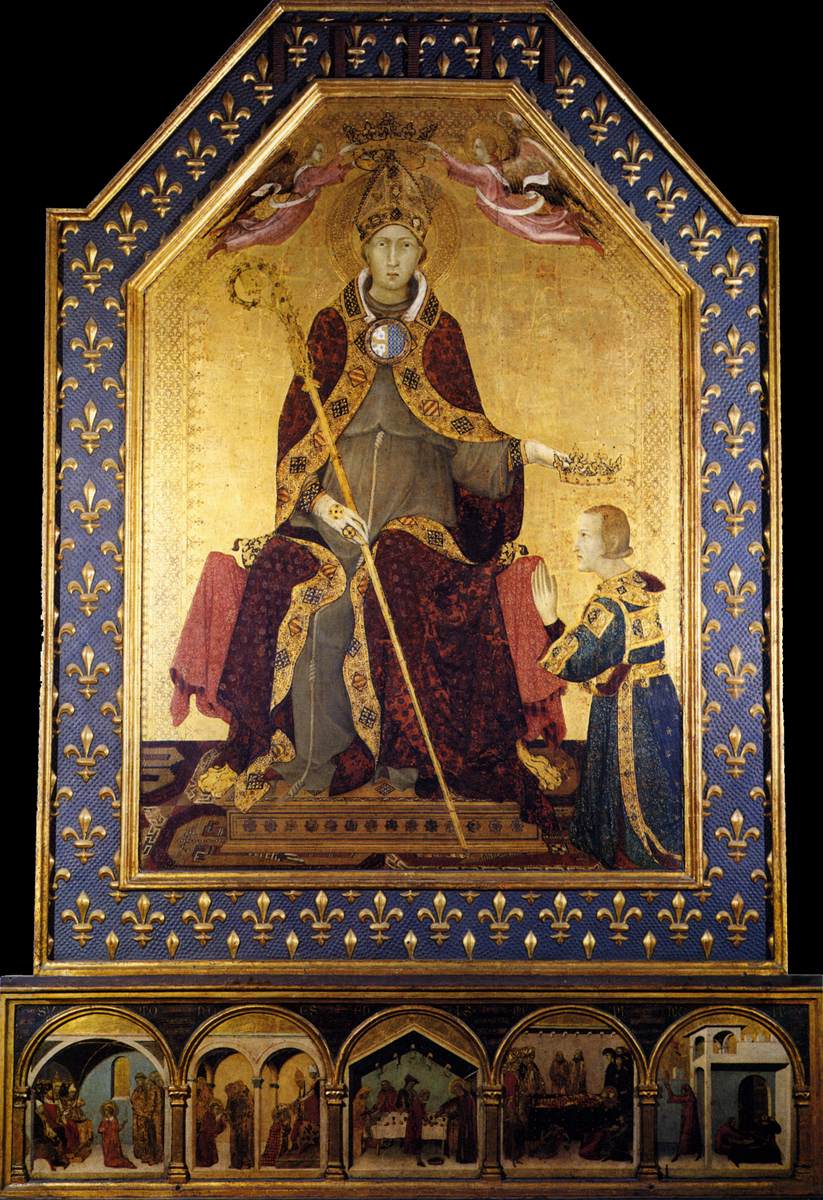
The life of the future saint Louis of Toulouse (1274- August 19, 1297) is a good example of how family expectations mingled with royal power politics in the service of religion. Louis was the second son of Angevin Charles II "the Lame" of Naples. As a child, he served with two of his brothers as a hostage for his father, who had been defeated in a naval battle with the Sicilians and Aragonians. For these seven years (1288-1295) he was educated by Franciscan friars, among them Peter Olivi, and impressed them with his holiness and learning. During an illness, he made a vow to become a Friar Minor. Even when he was still in captivity (1294), he was named Archbishop of Lyons. When his older brother died in 1295, Louis also became heir to his father's secular titles.
When Louis was released in 1295, at age twenty-one, he went to Naples where he renounced his rights of succession to his brother Robert. He then fairly quickly ascended through the priestly orders, becoming Bishop of Toulouse in 1296. Although Louis was a pious person-attested by his teachers who were renowned spiritual leaders-he was an untried administrator, whose appointment was suggested by his superb connections. He finally got to Toulouse in February of 1297, where his mildness and care for the poor were admired. However, he fell sick and died after only a few short months in office.
On what basis was Louis made a saint? The scenes depicted on the predella emphasize the Franciscan virtue of humility above all else. But whatever his virtues, it was undoubtedly his connection to the royal house of Naples, among other saintly relations (nephew to Louis IX of France, and descendent of saint Elizabeth of Hungary.) His case was promoted by Pope Clement V in 1307, and he was canonized by John XXII on April 7, 1317.
As a saint, Louis of Toulouse was not widely venerated, although his day was kept by the Franciscan order, and he became the patron saint of Valencia, where his relics were taken in 1423. He was also held in great honor in Naples by his brother Robert, who commissioned an extraordinarly sumptuous and beautiful altar to him from Simone Martini not long after the canonization.
In this altar, Louis of Toulouse gazes directly at us from his throne, dressed in episcopal garments whose looseness hints that he barely had time to grow into them. Although he sits against a glowing gold background highly reminiscent of Byzantine icons, the throne is positioned firmly on an inlaid floor, suggesting three-dimensional space in the progressive manner of International Gothic style. Robert of Anjou kneels to his left, and receives a crown from his brother's hand. Robert receives earthly glory, as Louis' abdication left him with a clear claim to the Kingdom of Naples. Presumably Robert is also the recipient of heavenly favors, as well, for his brother will surely intercede in heaven for this anointed king, and all of the Angevin dynasty. The panel emphasizes heraldic imagery, notably the French fleurs-de-lis in the frame.
The French ruling house was particularly honored in the Church. The canonization of Louis IX of France had only occurred ten years before, in 1297. The French nobility's intimate access to divinity is evident in a grouping of saints in the Francisan Church at Assisi. Around 1317, Simoni Martini decorated a chapel in honor of French patron Saint Martin. Here also St. Louis of Toulouse is pictured, in the company of other members of his order and family (St Louis and St Elizabeth).
 (St Louis of France and St. Louis of Toulouse)
(St Louis of France and St. Louis of Toulouse)









No comments:
Post a Comment